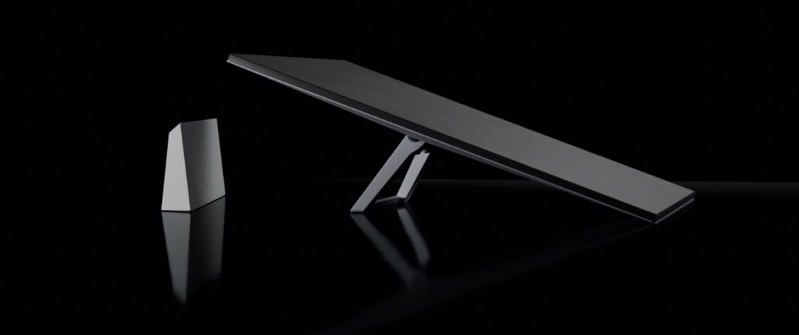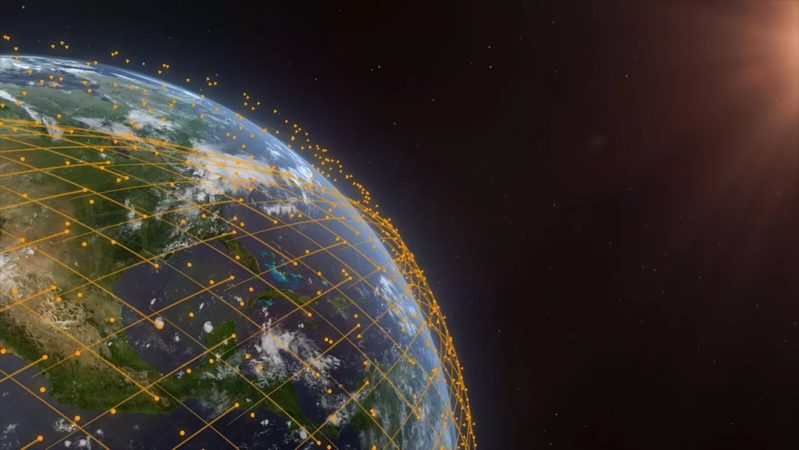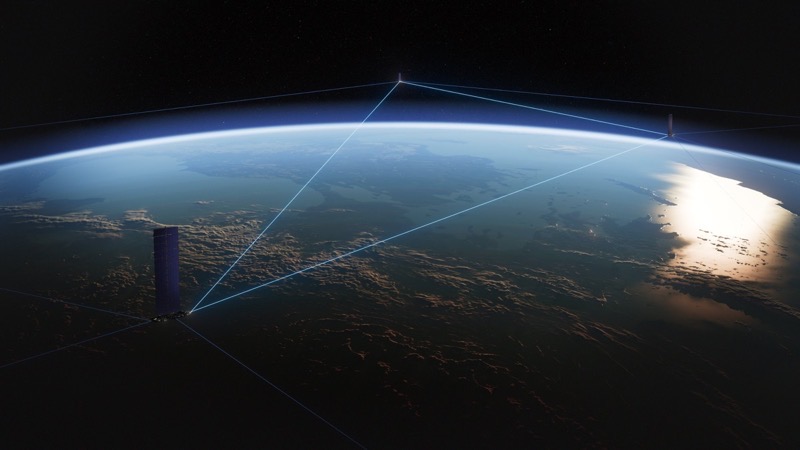
Amazon’s Project Kuiper Internet Satellites to Have 100 Gbps Laser Links

Amazon’s Project Kuiper, after successfully launching two prototype satellites in October 2023, has now confirmed the inclusion of laser links on every satellite in its constellation, forming a high-speed mesh network in space.
This development follows extensive testing of the project’s end-to-end communications payload and network, including the recently disclosed optical inter-satellite link (OISL) capabilities.
The prototypes, KuiperSat-1 and KuiperSat-2, are equipped with advanced optical communications payloads, capable of maintaining 100 Gbps links over distances of nearly 621 miles (1,000 kilometers). These successful demonstrations validate the final component of Project Kuiper’s communications architecture, ensuring operational OISLs on the first production satellites, scheduled for launch in the first half of 2024.
“With optical inter-satellite links across our satellite constellation, Project Kuiper will effectively operate as a mesh network in space. This system, designed fully in-house, optimizes for speed, cost, and reliability. The entire architecture has worked flawlessly from the start, a testament to our team’s innovation on behalf of customers. We’re excited to support these next-generation OISL capabilities on every Kuiper satellite from day one,” said Rajeev Badyal, Project Kuiper’s Vice President of Technology.
Project Kuiper’s OISLs use infrared lasers for data transmission between spacecraft, forming a secure, resilient mesh network that enhances throughput and reduces latency. Every satellite will be fitted with multiple optical terminals to establish high-speed laser cross-links. This network can transmit data approximately 30% faster than terrestrial fiber optic cables, thanks to light traveling faster in space.
Addressing the challenges of establishing and maintaining laser links in low Earth orbit, Project Kuiper has designed a state-of-the-art optics and control system. Tests in space have shown the ability to establish bi-directional links between two satellites, a critical feature for a mesh network.
Amazon’s OISL capabilities will enable Project Kuiper to offer secure, resilient connectivity to enterprise and public sector customers. This is vital for locations without nearby ground stations, like remote oceanic or transatlantic locations.
“Amazon’s optical mesh network will provide multiple paths to route data through space, creating resiliency and redundancy for customers. This is especially important for secure transport of information, and we look forward to making these capabilities available to public sector customers,” said Ricky Freeman, Vice President of Kuiper Government Solutions.
Project Kuiper, gearing up for satellite manufacturing, expects to begin early customer pilots in the second half of 2024, following a full-scale deployment starting in the first half of the year. This initiative marks a significant leap in optical communications technology, promising advanced connectivity solutions for both enterprise and government sectors.
“KuiperSat-1” and “KuiperSat-2,” the first two prototype satellites for the Project Kuiper initiative, were successfully launched aboard a ULA Atlas V rocket from Cape Canaveral Space Force Station on October 6, 2023.
While Project Kuiper attempts to rival SpaceX’s Starlink (which also has laser links), the latter will be launching three future Kuiper missions soon. Even SpaceX doesn’t mind helping out a potential rival in getting their satellites up to orbit.

